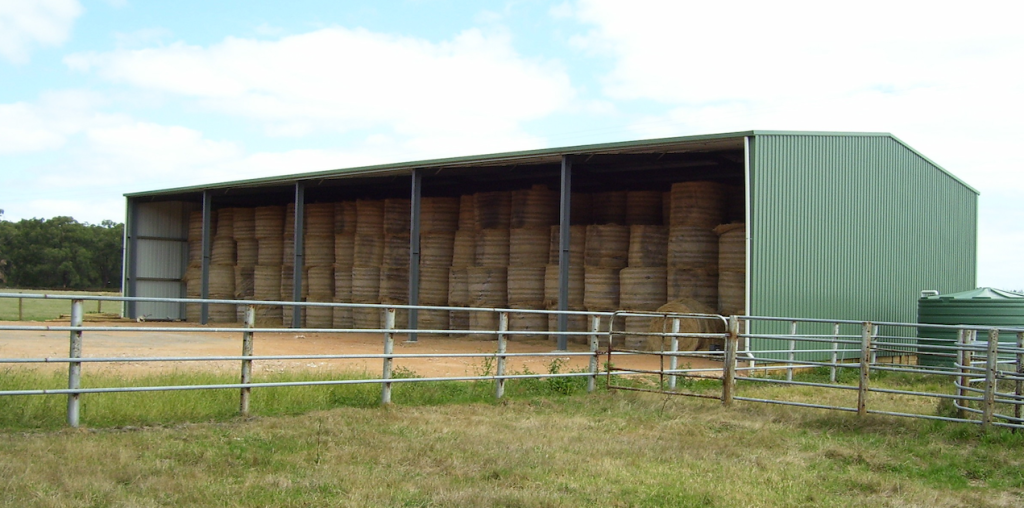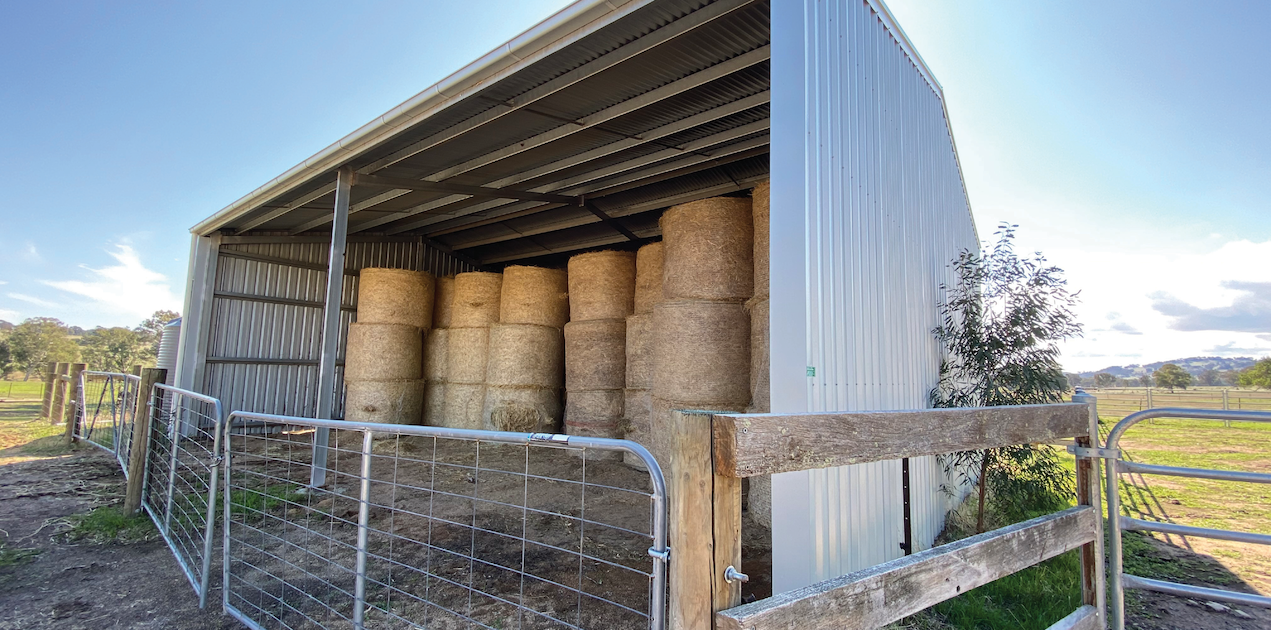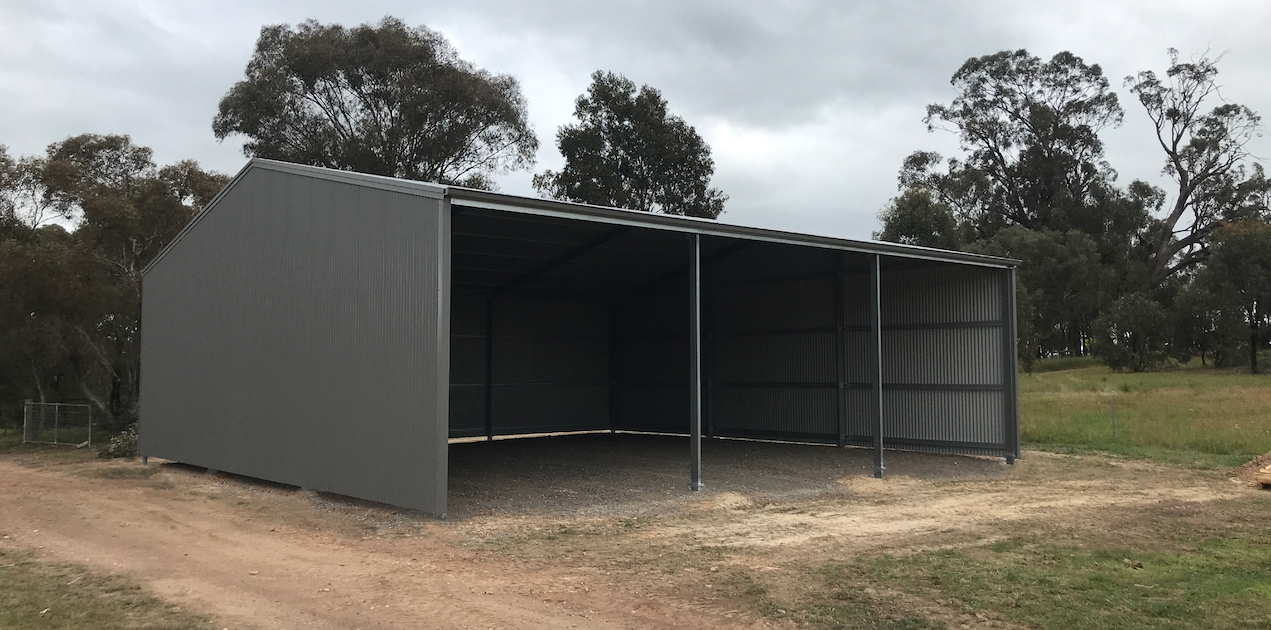
With more than half the land in Australia, 55% to be exact, used for agriculture, it plays a big part in the livelihood of many people across the country. Of this 55%, 62% of farms are classified as livestock, 30% are cropping, and 9% are dairy, all of which require a place to store some form of feed/fodder. With hay being the most important feed source for livestock, a quality farm shed is an essential part of any farming operation; however, are often overlooked regardless of whether you cultivate or buy your hay.
It may be more convenient to stack your hay where it’s cut or delivered, but more often than not, this is out in the open with no protection whatsoever, which can cause the shelf life of your hay to degrade exponentially, which leads to several issues that will affect your bottom line. The easiest way to avoid this problem is to invest in a quality hay shed.
Main benefits of a quality hay shed
A quality hay shed, whether big or small, will provide sufficient protection for your hay, which is the most important thing a hay shed will do for your farm. Completely exposing your hay to the elements doesn’t do it any favours. If your hay is to get wet or be affected by moisture, it will promote mould growth, which will cause your hay to be unusable. When your hay is subjected to heat along with an increase in haystack fires, it also causes the hay to compost and lose its nutritional value, which doesn’t make it any good for your livestock. The presence of wind can scatter your hay, reducing the size of your bales while also blowing in foreign matter that can contaminate your hay, which again makes it no good for your livestock.
While there are other storage solutions for your hay other than a quality hay shed, options like a tarp, while they can be cost-effective a tarp will limit air circulation, unlike a quality hay shed, which will lead to sweating, which will then add moisture to your hay and lead to the degradation of your hay. It also means that your hay will most likely be sitting directly on the ground, unlike the concrete slab of a quality hay shed, which, once again, can lead to moisture in your hay, along with the nutrients leeching into the soil, causing the hay to rot. By using a quality hay shed to store your hay, you eliminate all these possible risks/problems by creating a controlled storage environment, which then allows you to maintain the quality of your hay for longer, meaning you get better value for your money and the shelf life of your hay is increased.

What exactly is a quality hay shed
We keep throwing around the term ‘quality hay shed’, and while it is a subjective term, there are certain aspects that can make a hay shed a quality hay shed compared to other options. You have three frame style options for your hay shed frame; c-section, RHS and universal beam. Of these three frame options, RHS is the sweet spot for almost any shed. Universal beam frames are typically used for industrial structures that require superior structural strength, which often makes them overkill for your typical quality hay shed. The two more suitable options are RHS or c-section. Both are common in a range of different shed types, including hay sheds, but there are some distinct differences between the two, one notably being the strength. Due to the c-like shape of the c-section frame, the three sides, compared to the four of an RHS frame, means that it is slightly weaker and limits your span options. While it is a good economical option for small sheds, typically, if you’re going to build a hay shed, you’re not going to do it in a half measure. You’re going to build something large enough to cater to your current needs and possible future needs, so you don’t have to extend or build something new not long after you’ve just built a new hay shed. This is where using an RHS frame is a much better option. An RHS frame gives that long-lasting quality and strength with provisions for those large span sizes that quality hay sheds typically require without structurally compromising your hay shed. Using a stronger frame option like an RHS frame will ensure that your hay shed has a lasting quality that will keep your hay protected for many years to come. So, as you can see, the main defining element of a quality hay shed is typically the structural integrity provided by the selected frame type in combination with the other materials used in the build, with Australian made materials like ours always being a top option for lasting quality.

Quality hay shed sizes
Quality hay sheds can come in all shapes and sizes to suit your storage needs now, however, it’s common to see quality hay sheds with bays sizes of 8 meters that can accommodate three bales stacked side by side with room for ventilation and manoeuvring.
While you can build your quality hay shed in almost any size, there are some limitations depending on the frame type chosen.
Our quality hay shed sizes for RHS frames:
Premium frame option: Maximum 4.5m bays, 12.0m wide and 4.8m high with lean-to up to 7.5m wide
Premium+ frame option: Maximum 8.0m bays, 15.0m wide and 5.4m high with lean-to up to 7.5m wide
Learn more about our available frame types here.
So what are you waiting for? Now’s the perfect time to invest in a quality hay shed from All Sheds to extend the shelf life of you hay and ensure your bottom line isn’t impacted. Contact our friendly expert team today.
